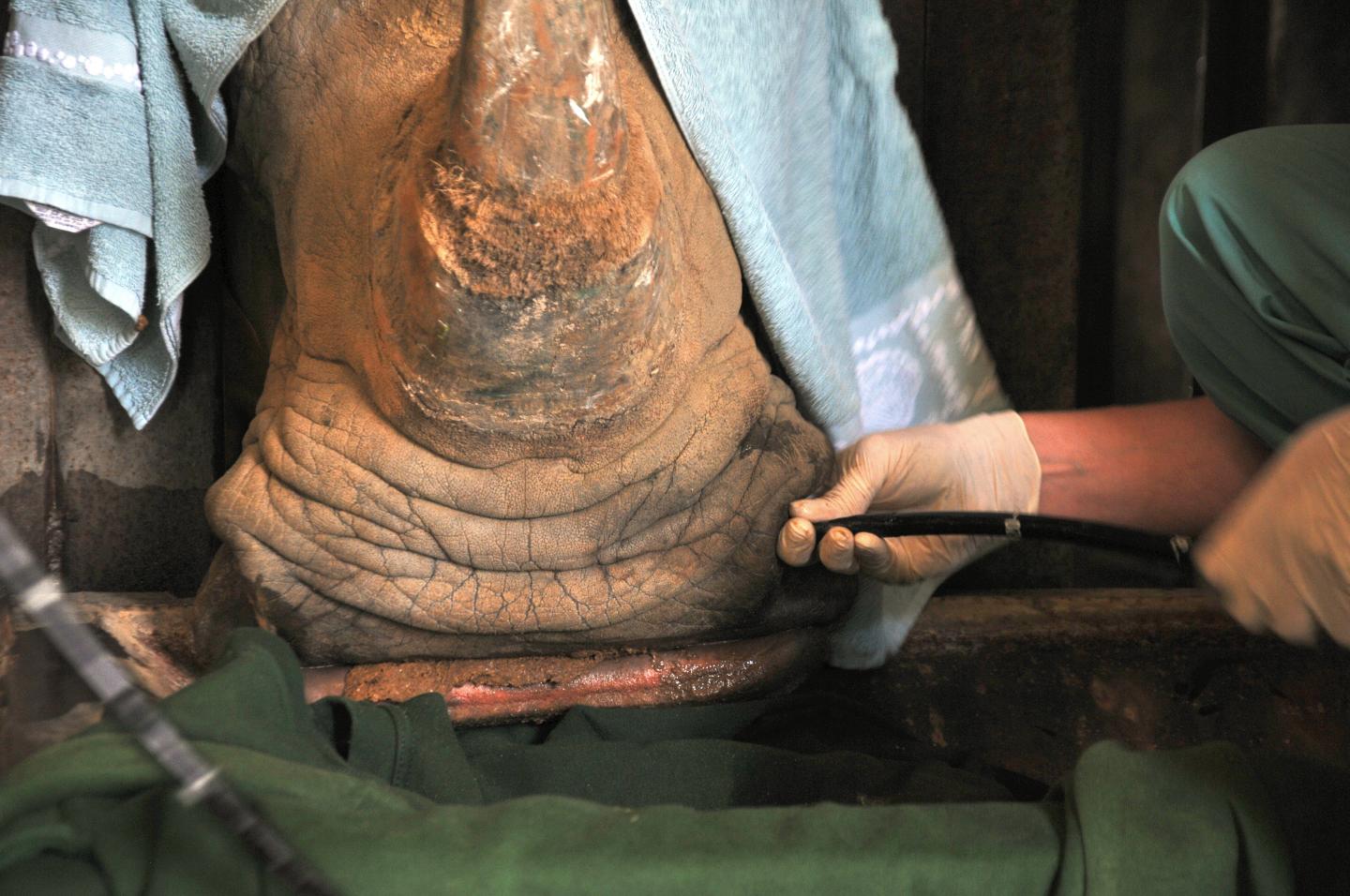
Credit: Jonathan Crackne
Diseases and tuberculosis in particular can pose considerable challenges for wildlife. In order to avoid epidemics within populations or to treat individual animals belonging to highly endangered species, fast and reliable tests are paramount. However present tuberculosis testing in rhinos relies on skin tests developed in the 1960s and designed for cattle bearing high risk of false diagnosis in rhinos. To improve diagnostic standards an international team of scientists led by institutes in Berlin and Jena, Germany, performed repeated lung lavage as a new approach for tuberculosis diagnosis in rhinoceros. Subsequent genetic tests reliably identified mycobacteria in the animals’ respiratory fluids – with minimal stress and risk for the rhinos. The study has been published in the journal PLOS ONE.
Conventional immunological tests for tuberculosis in rhinoceros are substantially insecure and bear high risk of false negative or false positive diagnosis with sometimes fatal consequences for the animal. At present only examinations carried out on deceased animals allow a reliable tuberculosis diagnosis. This situation has been the starting point for the team of scientists at the Leibniz Institute for Zoo and Wildlife Research (Leibniz-IZW) and the Friedrich-Loeffler-Institut (Federal Research Agency for Animal Health, FLI) to genetically analyse lung lavage fluids for mycobacteria as a new approach for tuberculosis diagnosis in these two-tonne animals. This required a short standing sedation, endoscopic exploration of the rhinoceros lung and collection of respiratory fluids. The collected fluids were tested for the presence of genetic material from mycobacteria in general and tuberculosis pathogens in particular. In parallel, the samples were cultured under special conditions to foster the growth of viable mycobacteria.
“There are two groups of mycobacteria, differing in their hazardous nature,” explains Robert Hermes from Leibniz-IZW. “On the one hand there are a few mycobacteria belonging to the Mycobacterium tuberculosis complex which can cause tuberculosis. On the other hand there are numerous mostly harmless mycobacteria not associated with any disease.” The latter ones are very common in the environment and rhinoceroses as strict grazers are immensely exposed to them. For that reason tests for tuberculosis pathogens need to be very fail-safe in differentiating these two groups of mycobacteria. Conventional immunological skin and blood tests for rhinos often indicate immunological reactions which turn out to be reactions to harmless mycobacteria after euthanasia of “tuberculosis-suspicious” animals.
Here, repeated lung lavage was performed on 7 rhinos from European Zoos with a total of 21 fluid collections with subsequent laboratory analysis. The study proved the superiority of the new endoscopic approach. It was found that lung fluids of all animals revealed the presence of DNA from only harmless mycobacteria. The danger of false diagnosis of the tuberculosis (false positive result) could now be reduced in the future using lung lavage. “Precluding an infection with tuberculosis pathogens, however, cannot be achieved by a single examination,” adds Stefanie Barth from the National Reference Laboratory for Bovine Tuberculosis at the FLI. In order to rule out false negative results (where an animal is infected while the test does not indicate that) the scientists recommend repeated tests on tuberculosis-suspicious rhinoceros. A guarantee does not come with this, but the approach delivers results that are far closer to a reliable diagnosis than conventional tests, for example skin tests, on living rhinos.
Infections with tuberculosis pose a threat to humans and livestock. In regions where wild and farmed animals get into contact the risk of bidirectional spill-over is a real and pressing problem. Scientists assume that the African buffalo population in South Africa became infected by bovine tuberculosis through its interaction with infected domestic cattle. The buffalos are now acting as maintenance hosts and spread the disease to carnivores feeding on them as well as to other species with which they come into contact. To date a large number of wildlife species – among them critically endangers species – were tested positive for bovine tuberculosis including lion, greater kudu, cheetah, spotted hyena, leopard, and rhinoceros. The disease is a zoonosis, which means it can be naturally transmitted between animals and humans. Therefore, in this case, research into wildlife diseases is also targeting the benefit of mankind.
###
Media Contact
Robert Hermes
[email protected]
49-305-168-448
Original Source
http://www.
Related Journal Article
http://dx.




